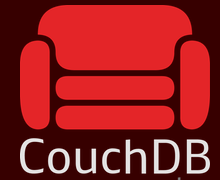Description
Introduction
YugabyteDB is a distributed SQL database designed for modern, cloud-native applications. It offers high scalability, low latency, and high availability, making it a great choice for building and running mission-critical applications. To fully leverage YugabyteDB’s capabilities, it’s essential to understand its ecosystem of tools and integrations that help streamline development, management, and analytics. This guide explores the various tools and integrations available in the YugabyteDB ecosystem.
Prerequisites
- Basic understanding of SQL and databases.
- Familiarity with cloud computing and distributed systems.
- Experience with YugabyteDB (optional but recommended).
Table of Contents
- Overview of the YugabyteDB Ecosystem
1.1 What is the YugabyteDB Ecosystem?
1.2 Key Components of the Ecosystem
1.3 Benefits of Integrating with YugabyteDB - YugabyteDB Query Language (YSQL) and YCQL
2.1 YSQL: SQL for Distributed Systems
2.2 YCQL: NoSQL for Flexibility(Ref: Hands-On YugabyteDB Workshop: Building Scalable Apps)
2.3 Integrating with Applications using YSQL and YCQL
2.4 Migration Tools for SQL and NoSQL Workloads - YugabyteDB Client Drivers and Libraries
3.1 Official Client Drivers
3.2 Integrating with Java, Python, and Go
3.3 RESTful APIs and gRPC Integrations
3.4 Using YugabyteDB in Microservices Architectures - YugabyteDB and Kubernetes Integration
4.1 Managing YugabyteDB on Kubernetes
4.2 Helm Charts for Easy Deployment
4.3 Scaling and Monitoring YugabyteDB in Kubernetes
4.4 Best Practices for Running YugabyteDB in a Cloud-Native Environment - Monitoring and Observability Tools
5.1 YugabyteDB’s Built-in Monitoring Tools
5.2 Integrating with Prometheus and Grafana
5.3 Setting Up Alerts and Dashboards
5.4 Query Performance Monitoring and Optimization - Backup and Disaster Recovery
6.1 YugabyteDB Backup Solutions
6.2 Point-in-Time Recovery (PITR)
6.3 Cross-Region Replication and Failover
6.4 Integrating with Backup Services (Cloud and On-Premise) - Data Analytics and Business Intelligence Integrations
7.1 Real-Time Analytics with YugabyteDB
7.2 Integrating with Apache Kafka for Event Streaming
7.3 Connecting YugabyteDB to BI Tools (Tableau, Power BI, etc.)
7.4 Using YugabyteDB for OLAP Workloads - Security Tools and Integrations
8.1 Role-Based Access Control (RBAC)
8.2 Encryption and Data Protection Tools
8.3 Auditing and Compliance with YugabyteDB
8.4 Integrating with IAM Solutions - YugabyteDB in the Cloud
9.1 Deploying YugabyteDB on AWS, GCP, and Azure
9.2 Integration with Cloud-native Services (Lambda, BigQuery, etc.)
9.3 Hybrid and Multi-Cloud Deployments with YugabyteDB
9.4 Cost Optimization Strategies in the Cloud - Tools for Data Migration to YugabyteDB
10.1 Migrating from PostgreSQL and Cassandra
10.2 Using YugabyteDB’s Data Migration Tool
10.3 Best Practices for Data Migration and Sync
10.4 Handling Large Datasets and High Throughput - Developer Tools for Building YugabyteDB Applications
11.1 YugabyteDB Client Libraries for Application Development
11.2 Building Scalable Apps with YugabyteDB
11.3 Best Practices for Application Performance
11.4 Working with Distributed Transactions and Consistency - Conclusion
Conclusion
The YugabyteDB ecosystem provides a comprehensive suite of tools and integrations that help developers, DBAs, and enterprises get the most out of their distributed SQL database. By leveraging the power of YugabyteDB alongside its rich ecosystem, you can streamline development, improve scalability, and ensure the resilience of your applications. Whether you are deploying on Kubernetes, integrating with cloud services, or optimizing for analytics, YugabyteDB’s ecosystem ensures you have the necessary tools for building modern, high-performance applications.







Reviews
There are no reviews yet.